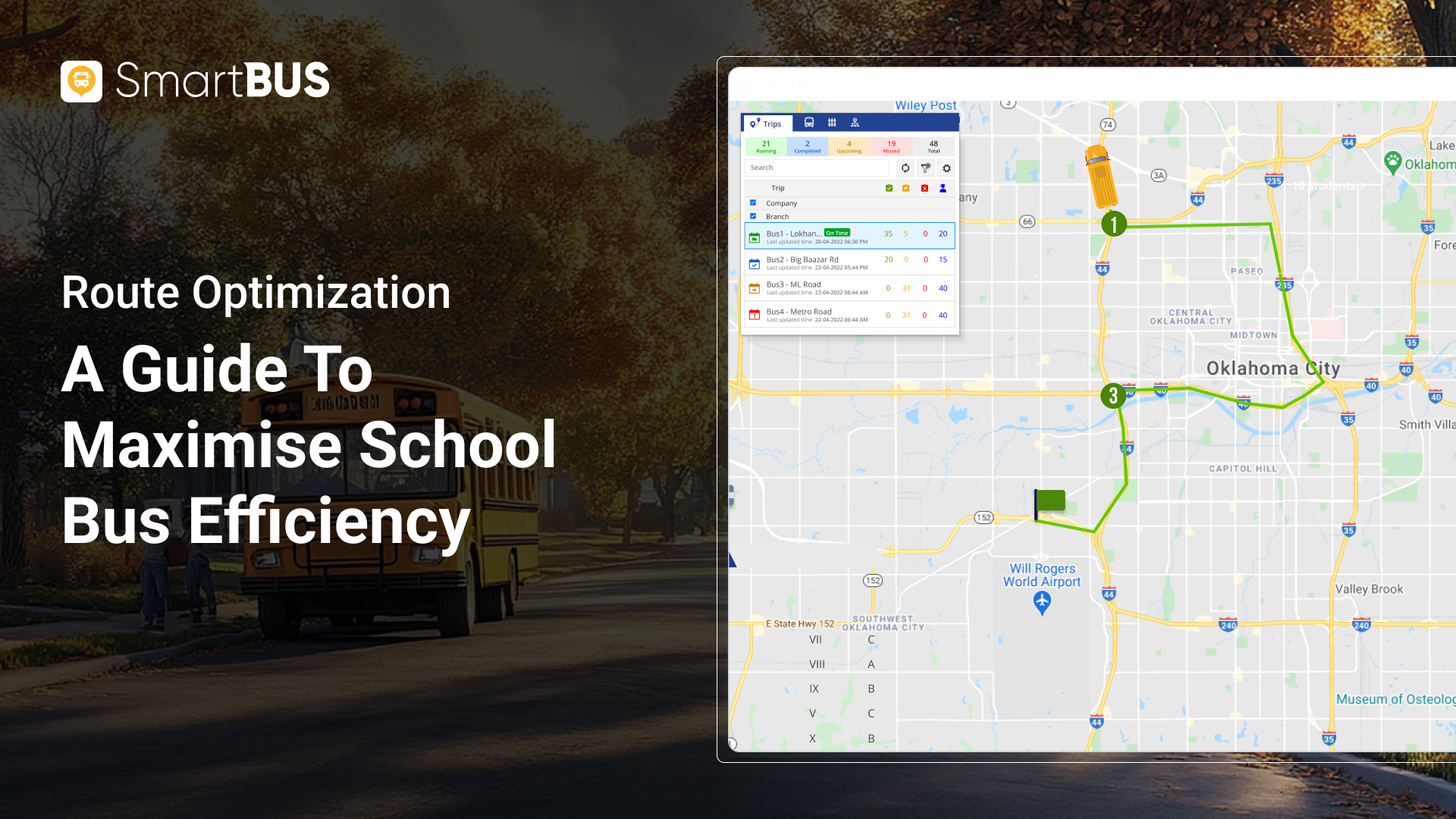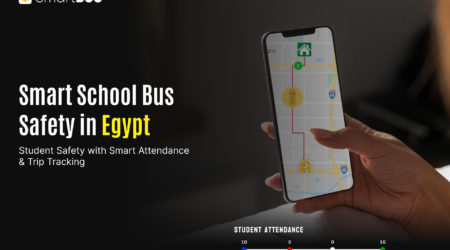Route Optimization : A Guide To Maximise School Bus Efficiency

Route optimization is to determine the most efficient school bus routes that minimize travel time, fuel consumption and the overall transportation cost. With SmartBus, route optimization is automated and integrated into the systems ensuring that school buses follow the best possible routes for timely pick-ups and drops.
By using real-time data and better algorithms, SmartBus calculates the optimal paths reducing delays and improving the overall efficiency of the fleet.
Why Use Route Optimization for School Bus ?
Route optimization ensures timely and cost-efficient routes and some safe bus operations that benefits both parents and schools. SmartBus makes route optimization easy and efficient. Here are some features that make route optimization one of the most important aspects in school bus monitoring.
- Time saving: A better and optimized route helps avoid any unnecessary delays and makes sure that students reach school on time. With SmartBus each route is planned keeping children’s pick-up and drop times consistent.
- Cost-efficiency: By minimizing the travel distances and fuel consumption, SmartBus helps schools cut down the operating cost. This feature leads to significant savings.
- Environmental Impact: Less travel time equals less fuel usage. SmartBus route optimization reduces the school bus fleet’s carbon footprint and contributes to a cleaner environment.
- Safety: With better planned routes and few delays buses can stay on track and avoid risky or unfamiliar roads. This ensures that students are transported to school safely.
Limitation of Route Optimization
While route optimization greatly improves school bus efficiency, it’s important to understand some of the limitations too.
- Dynamic Traffic Conditions: Accidents or road closures can affect most optimized route plans with unexpected traffic conditions.
- Last Minute Changes: Adding or removing students from a bus route at the last minute can be a difficult task and may accommodate with adjusting the entire route.
- Software Compatibility: School districts may face challenges by integrating SmartBus with other transportation management systems. Although SmartBus provides a smooth integration experience for all your software compatibility.
Importance of Geocoding & Geofencing in Route Optimization
Geocoding and Geofencing enhances the process of route optimization.
- Geocoding: It is a process that converts addresses into precise coordinates on a map. Geocoding ensures that buses can pick up and drop students at the correct location.
- Geofencing: It allows the creation of a virtual boundary for specific areas. When the bus enters or exits a particular zone, the system sends automated notifications. This real-time tracking helps managers stay informed about the bus location.
These features work together to optimize routes and improve the overall school bus monitoring experience.
Simple Route Planning vs Scheduling Route Plan
There are two types of route planning. Let’s have a detailed look at them.
- Simple Route Planning
When a bus is assigned a basic route that might involve little to no changes then it is known as simple route planning. The process is simple but it does not take into account real-time variables like traffic, delays and student count. - Scheduling Route Plan
The process involves a detailed schedule with specific pickup and drops for each student. This plan also takes into account the traffic patterns, student needs and school timings. It is more efficient and route optimized for schools.
What’s things to look to look in Route Optimization Software
- Automate Route Planning: The software should be able to automatically suggest the best routes based on current data, minimizing the need for manual planning.
- Accurate Geocoding: Precise address recognition ensures that buses never miss a stop and always go to the correct location.
- Cost-Based Route Optimization: Look for software that factors in fuel costs, driver wages, and vehicle maintenance to choose the most economical routes.
- Single Route Plan: It’s important to have one unified route plan for each bus, making it easier for administrators to manage.
- Automated Notification: Parents and school administrators should receive automated updates when buses are nearing a stop, delayed, or running ahead of schedule.
- Historical Data Inspection: The software should analyze past routes to help predict and adjust for future travel conditions, leading to continuous improvement.
Challenges and Solution for School bus Route Optimization
Even with the best route optimization tools, there are challenges that schools may face, but there are also solutions:
Challenge: Unexpected Traffic – Traffic jams and accidents can obstruct even the most optimized routes.
⟹ Solution: Use real-time traffic updates and alternative route suggestions from the software to keep buses on track.
Challenge: Last-Minute Changes – New student enrollments or bus route modifications can cause headaches.
⟹ Solution: Invest in flexible software that can adjust routes dynamically and accommodate new information.
Challenge: Maintaining Safety – Keeping children safe while on the road is always a priority.
⟹ Solution: Implement geofencing and real-time monitoring to ensure that buses stay on designated routes and alert drivers in case of any discrepancies.
Conclusion
With SmartBus, route optimization becomes easy and an integrated part of the school transportation system. By automating the route planning process you improve efficiency and provide real-time updates. SmartBus helps schools save time, reduce fuel cost and enhance the safety of their bus fleets.
Investing in SmartBus is a smart move for partners looking to improve transportation management and provide the best possible service to their customers.
FAQs :
Q1 : How Route Optimization helps to make school bus transportation easy ?
Route optimization with SmartBus automates the process of planning and adjusting routes, making school bus transportation more efficient and reliable for both schools and parents.
Q2 : How does route optimization benefit schools and parents?
For schools, it reduces transportation costs and helps keep buses on schedule. Parents benefit from timely and safe transportation, with real-time notifications keeping them informed.
Q3 : Can route optimization handle last-minute changes or emergencies?
Yes, route optimization can quickly adjust routes to accommodate last-minute changes, such as new student enrollments or emergency situations.
Q4 : What data is required to optimize school bus routes effectively?
Data such as student addresses, bus schedules, traffic conditions, and past route performance to create the most efficient routes for each bus.



